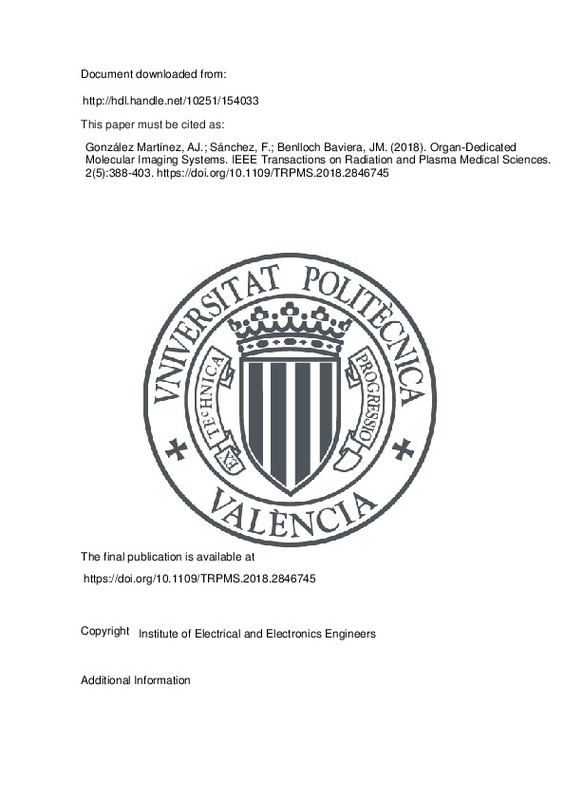JavaScript is disabled for your browser. Some features of this site may not work without it.
Buscar en RiuNet
Listar
Mi cuenta
Estadísticas
Ayuda RiuNet
Admin. UPV
Organ-Dedicated Molecular Imaging Systems
Mostrar el registro completo del ítem
González Martínez, AJ.; Sánchez, F.; Benlloch Baviera, JM. (2018). Organ-Dedicated Molecular Imaging Systems. IEEE Transactions on Radiation and Plasma Medical Sciences. 2(5):388-403. https://doi.org/10.1109/TRPMS.2018.2846745
Por favor, use este identificador para citar o enlazar este ítem: http://hdl.handle.net/10251/154033
Ficheros en el ítem
Metadatos del ítem
| Título: | Organ-Dedicated Molecular Imaging Systems | |
| Autor: | ||
| Entidad UPV: |
|
|
| Fecha difusión: |
|
|
| Resumen: |
[EN] In this review, we will cover both clinical and technical aspects of the advantages and disadvantages of organ specific (dedicated) molecular imaging (MI) systems, namely positron emission tomography (PET) and single ...[+]
|
|
| Palabras clave: |
|
|
| Derechos de uso: | Reserva de todos los derechos | |
| Fuente: |
|
|
| DOI: |
|
|
| Editorial: |
|
|
| Versión del editor: | https://doi.org/10.1109/TRPMS.2018.2846745 | |
| Código del Proyecto: |
|
|
| Agradecimientos: |
This work was supported in part by the European Research Council through the European Union's Horizon 2020 Research and Innovation Program under Grant 695536, in part by the EU through the FP7 Program under Grant 603002, ...[+]
|
|
| Tipo: |
|







![[Cerrado]](/themes/UPV/images/candado.png)


